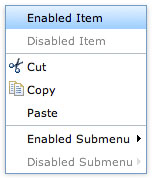Check for Google Analytics Using MooTools 1.2
When I launched my new design last week, I used PHP to comment out Google Analytics because I didn't want to skew the stats. Well, I did skew my stats that day because I forgot to uncomment the damn GA code. Rook move, I know. With that in mind, I've created a MooTools script that checks to make sure Google Analytics is loaded. If not, you get a friendly JavaScript alert() reminder.
The MooTools 1.2 Code
window.addEvent('load', function() {
if(typeof(eval(window)['_ufsc']) == 'undefined') {
alert('David, turn on GA!');
}
});
Not having 10 hours worth of stats is a big deal. This code will (hopefully) prevent this from happening again in the future.
![Serving Fonts from CDN]()
For maximum performance, we all know we must put our assets on CDN (another domain). Along with those assets are custom web fonts. Unfortunately custom web fonts via CDN (or any cross-domain font request) don't work in Firefox or Internet Explorer (correctly so, by spec) though...
![Write Better JavaScript with Promises]()
You've probably heard the talk around the water cooler about how promises are the future. All of the cool kids are using them, but you don't see what makes them so special. Can't you just use a callback? What's the big deal? In this article, we'll...
![Retrieve Your Gmail Emails Using PHP and IMAP]()
Grabbing emails from your Gmail account using PHP is probably easier than you think. Armed with PHP and its IMAP extension, you can retrieve emails from your Gmail account in no time! Just for fun, I'll be using the MooTools Fx.Accordion plugin...
![Create a Context Menu with Dojo and Dijit]()
Context menus, used in the right type of web application, can be invaluable. They provide shortcut methods to different functionality within the application and, with just a right click, they are readily available. Dojo's Dijit frameworks provides an easy way to create stylish, flexible context...





Why aren’t you using the same if statement as you do for your config file as mentioned in a previous post?
http://davidwalsh.name/knowing-website-state-php
As a matter of fact, you commented on your own post saying you use it for Google Analytics!
@Jeff: Because I wasn’t developing locally, per say. I was dragging each file to my desktop, and then reuploading as I changed it. Again, not the best way of doing things.
I do, however, use my “website state” strategy at work.
@Jeff: Simply put….I was lazy with my own site and paid the price for it.
Works great unless you are the type to upload something and not confirm the changes (and then have all your visitors get the popup). Hey, if you can make one lazy mistake you can make another, haha.
@Sameer: Very true!
A much simpler and easier to manage solution is to set up a filter in google analytics itself.
For example, “exclude all traffic from user agents marked ‘website-tester.'” Then simply use Firefox’s user-agent switcher extension to use ‘website-tester’ whilst testing.
This also allows more flexibility than the “website state” strategy as PHP, Google Analytics etc… can be clever about your own use of the site for testing purposes even on a website that is live and working for everybody else.
Obviously the website state idea still has validity when when you have two near identical sites, one for production and the other live. As an example my platform generates a robots.txt automatically and on the staging site adds the “Disallow: /” directive to prevent the staging site from being indexed and all those duplicate content issues.
Hey David, this post is a few years old now and it still works! :D but have you come across any new ways of detecting Google Analytics?